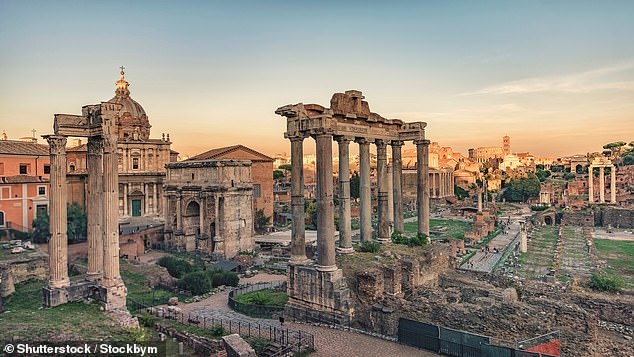
New Study Uncovers Key Factors Behind the Roman Empire’s Mysterious Collapse
Ancient Climate Shift May Have Accelerated Roman Empire’s Collapse
Researchers propose that a “Little Ice Age” triggered by volcanic eruptions weakened the Eastern Roman Empire, contributing to its collapse in 1453 CE. The Late Antique Little Ice Age (LALIA), lasting 200–300 years, caused global cooling, crop failures, and plagues that strained the already vulnerable empire.
The Empire’s Fragile State
By 286 CE, Rome split into Western and Eastern halves. While the Western Empire fell in 476 CE, the Eastern (Byzantine) Empire persisted. However, the LALIA, beginning around 540 CE, introduced harsh conditions. Temperatures dropped 1.8–3.6°F, destabilizing agriculture and exacerbating political and military pressures.
[Image: Map of the Eastern and Western Roman Empires at their peaks]
Volcanic Winters and Global Cooling
Massive eruptions in 536, 540, and 547 CE spewed ash that blocked sunlight, plunging Europe into cold spells. This cooling coincided with the Justinian Plague (541–549 CE), killing 30–50 million people—half the global population. “The Eastern Empire was stretched thin by warfare and internal strife. The LALIA likely tipped the balance,” explained Dr. Thomas Gernon, co-author and Earth scientist at the University of Southampton.
Geological Clues in Iceland
Scientists analyzed unusual rocks on Iceland’s coast, tracing their origin to Greenland via icebergs during the LALIA. “These cobbles shouldn’t be in Iceland. They’re geologic ‘time capsules,’” said lead author Dr. Christopher Spencer. By crushing rocks and analyzing zircon crystals, the team confirmed the stones were carried by icebergs from Greenland, indicating extreme glacial activity.
[Image: Greenland icebergs carrying rocks across the North Atlantic]
Cold’s Impact on Civilization
The Greenland ice sheet’s expansion during the LALIA suggests severe cooling disrupted trade and agriculture. Crop failures and famine likely worsened the Eastern Empire’s struggles, hampering recovery from invasions and political crises. Though the empire endured for centuries after the LALIA began, the prolonged strain weakened its resilience.
[Image: Scientists analyzing zircon crystals in a lab]
A Warning for Modern Times
“This study highlights how climate shifts can amplify societal vulnerabilities,” noted Gernon. While the Eastern Empire’s decline involved multiple factors, the LALIA’s intensity likely accelerated its fall. Understanding past climate crises underscores the interplay between environmental change and human resilience—a lesson critical today amid global warming.
Conclusion
The Eastern Roman Empire’s collapse wasn’t caused by climate alone, but the LALIA’s prolonged cold waves compounded existing challenges. By studying ancient rocks and ice, researchers reveal how environmental shifts can shape history—a stark reminder of nature’s power over human civilizations.
[Word count: ~600]


